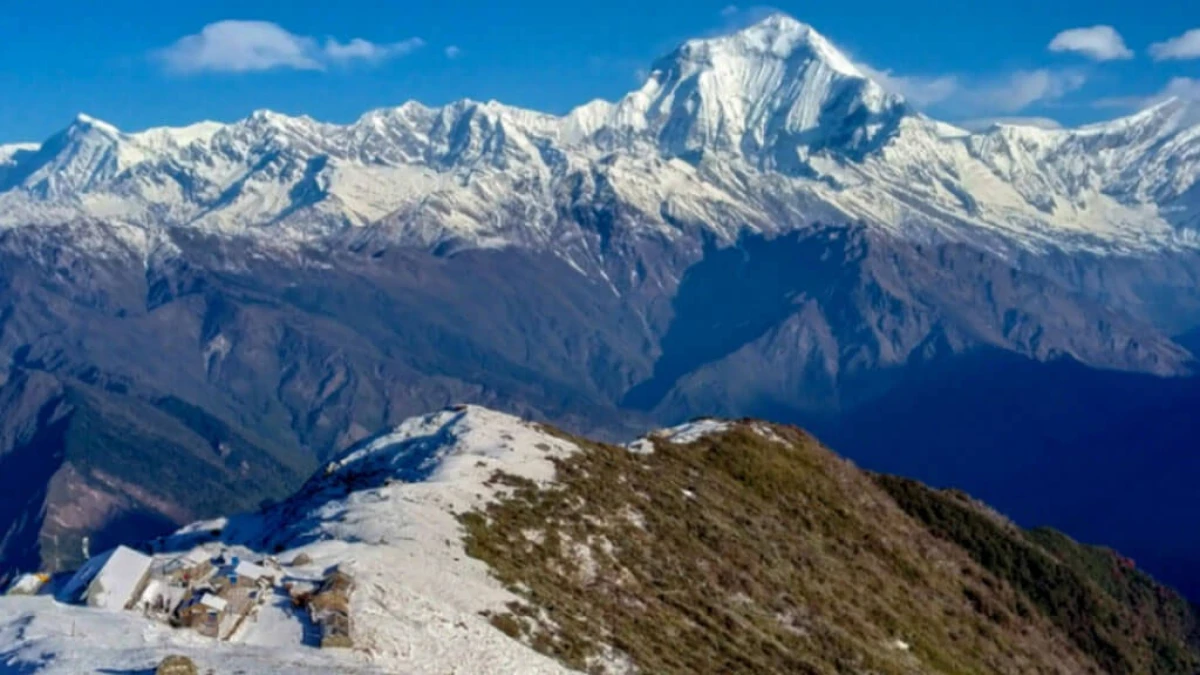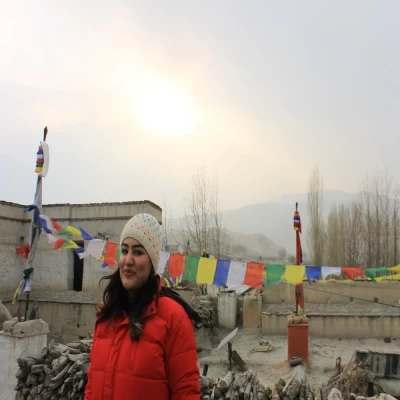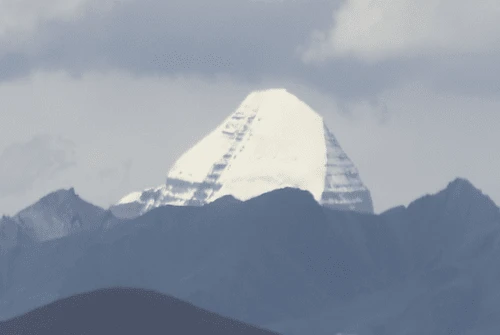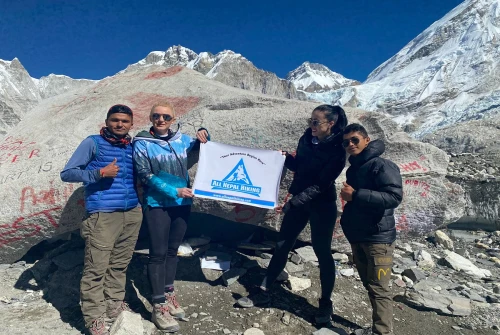Overview
Nestled in the Annapurna region of Nepal, the Khopra Ridge Trek presents a remarkable alternative to the ever-popular Ghorepani Poon Hill route. While both treks offer stunning Himalayan views, the Khopra Ridge journey brings us deeper into unspoiled mountain terrain, untouched culture, and crowd-free trails. It's not just about getting a better view, it's about experiencing Nepal more intimately.
If you're someone who longs for a trail that feels wild, sacred, and remote, where each step brings you closer to nature and the heart of village life, Khopra Ridge invites you in. Unlike the well-trodden Poon Hill path, which is often buzzing with trekkers, Khopra offers tranquility, raw beauty, and a deep cultural pulse that stays with you long after the trek ends.
What Makes Khopra Ridge View Better Than Poon Hill?
The views from both treks are undeniably impressive, but Khopra Ridge offers a higher, more expansive, and more exclusive panorama. At 3,660 meters, Khopra Danda rises well above the 3,210-meter Poon Hill viewpoint, allowing for a wider arc of Himalayan giants. From this ridge, we witness towering peaks like Dhaulagiri (8,167m), Annapurna South, Nilgiri, Tukuche, and Machhapuchhre (Fishtail) in majestic clarity. These aren't quick glimpses. We spend nights here, allowing both sunrise and sunset to paint the peaks in glowing light.
Poon Hill, while easier to access, has become a crowded sunrise ritual. You're often shoulder to shoulder with dozens, sometimes hundreds, of others jostling for the same photo. In contrast, Khopra Ridge offers space, peace, and the rare chance to sit in silence before the Himalayas, making it a more personal and profound mountain encounter.
How Is the Trail Experience More Authentic and Peaceful?
The Khopra Ridge trail winds through untouched forests, pasturelands, and authentic mountain villages far from the tourist bustle. It's a place where every bend reveals something new—perhaps a waterfall cascading through mossy stones, a child herding goats along a quiet hillside, or a family tending their crops beside ancient stone homes.
In contrast, the Poon Hill trail can feel overly commercialized. While still scenic, it’s lined with guesthouses, shops, and constant human traffic. At times, it loses that wilderness feel. Khopra, on the other hand, feels untouched and immersive. You’ll walk for hours with only the sound of birds and the crunch of leaves beneath your boots.
Moreover, because Khopra is managed through community-based tourism, your presence directly supports local development. It’s sustainable, respectful travel that benefits both visitor and host.
How Do Accommodations Compare on Both Trails?
Poon Hill offers more comfort and variety when it comes to accommodations. Ghorepani, Tadapani, and Ghandruk have dozens of established teahouses equipped with private rooms, en-suite bathrooms, Wi-Fi, charging stations, and diverse menus. It’s perfect for those who want a lighter trekking experience with more modern amenities.
Khopra Ridge, in contrast, features basic but warm community lodges. These are often built and maintained by locals as part of eco-tourism initiatives. Rooms are simple, meals are home-cooked, and facilities are limited, with no Wi-Fi, few charging points, and shared bathrooms. Yet, what you get in return is authentic hospitality and a direct connection to local life. We sit by the kitchen fire, eat dal bhat prepared with vegetables from the backyard, and talk with lodge owners about their lives in the mountains.
So, if your focus is comfort, Poon Hill wins. But if you value authenticity, community engagement, and a true off-the-grid experience, Khopra Ridge delivers something far more meaningful.
What Cultural Experiences Can Trekkers Expect on Both Trails?
Culture runs deep on both treks, but in very different ways.
On the Poon Hill trek, villages like Ghandruk and Ghorepani offer a beautiful introduction to Gurung and Magar traditions. Ghandruk even has a Gurung museum, where traditional clothing and tools are displayed. However, due to heavy tourism, the cultural interactions can feel somewhat staged or diluted, tailored to visitor expectations.
Khopra Ridge, by contrast, passes through less-touristed villages like Swanta, Nangi, and Chistibung, where daily life remains deeply traditional. Here, we might share a meal with a local family, watch elders weaving wool, or hear songs sung in their native tongue during festival evenings. Cultural moments are spontaneous, raw, and heartfelt. Especially if you trek during local festivals like Dashain or Janai Purnima, you’ll be immersed in rituals rarely witnessed by outsiders.
This makes Khopra not just a trek but a window into highland life that feels intimate and real.
What Views and Natural Diversity Can You Expect on Each Trek?
Both treks boast stunning natural beauty, but Khopra Ridge offers greater elevation, variety, and isolation, enhancing every aspect of the experience.
Flora & Fauna: In spring, both trails bloom with vivid rhododendron forests, but Khopra passes through more diverse vegetation zones—from lush subtropical forests to high alpine meadows. It’s also home to Himalayan monals, langurs, and elusive musk deer, which are less likely to be spotted on the busier Poon Hill route.
Terrain & Landscape: Poon Hill’s terrain is gentler, with stone staircases winding through well-maintained trails and village hamlets. It’s ideal for first-time trekkers or families. Khopra, on the other hand, has more varied, rugged ridgelines, wild pastures, mossy woodlands, and remote paths, making it feel like a true Himalayan adventure.
Sacred Sites: Only Khopra offers a side trip to Khayer Lake (4,660m), a sacred alpine lake nestled beneath Annapurna South. Pilgrims visit here for spiritual cleansing, and we as trekkers are treated to unparalleled serenity and glacier-fed waters reflecting snow-capped peaks.
If you’re looking for more wild, untouched nature, Khopra Ridge excels in every way.
Why Is Khopra Ridge Better for Those Who Want a Deeper Connection With Nature and Culture?
The answer is simple: Khopra lets you feel like a part of the land, not just a visitor passing through. The mountains are grander, the people more open, the culture unfiltered, and the path more meditative. It strips away the layers of modern convenience to reveal the real Nepal: raw, beautiful, and spiritual.
Every sunset here is a meditation. Every meal, a moment of cultural exchange. Every step, a deeper step into the self.
If you want a trek that speaks not just to your eyes, but to your heart, Khopra Ridge is the journey you’ve been waiting for.




